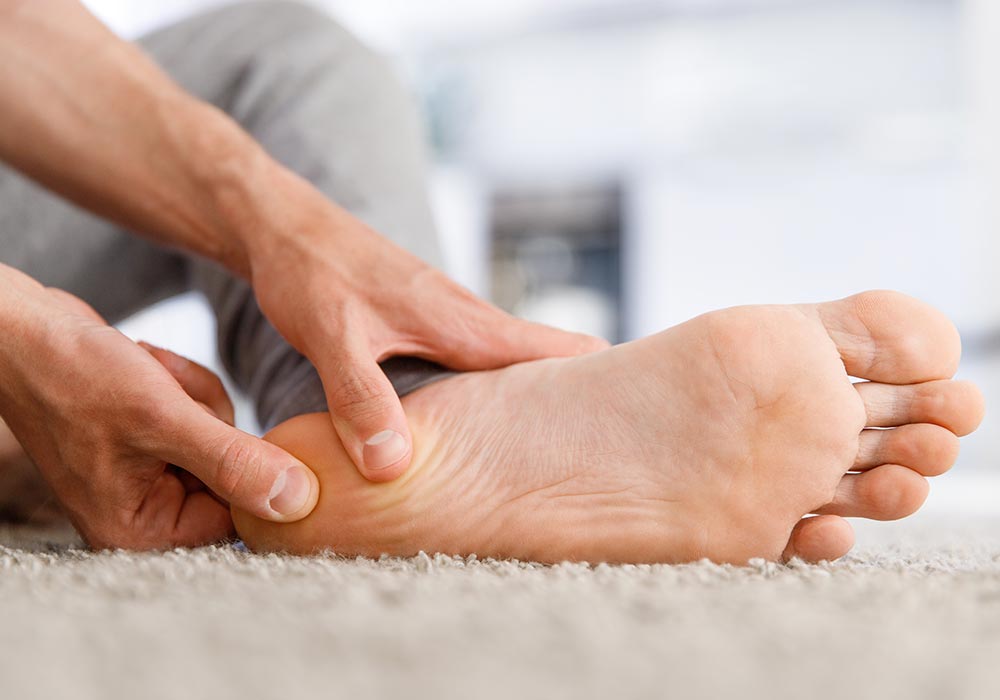If you feel pain in your foot after getting up in the morning and taking your first steps, you could be suffering from a heel spur. In fact, more than ten percent of the population has already made acquaintance with a painful sole.
We will be happy to advise you in our private practice for orthopedics and traumatology about our treatment options and together we will find the best therapy for your rehabilitation.

Cause: Overload
A heel spur is always the result of overloading. It develops when muscles and fasciae are repeatedly exposed to strong tension – be it due to one-sided strain, overweight, foot malpositions, sports or uncomfortable footwear. If this condition persists over a longer period of time, the body tries to relieve the foot and contain inflammatory reactions.
The small tears and inflammation in the tissue caused by the overload are then compensated for by calcification to shorten the tendon. If this overuse occurs at the plantar fascia, it is called a lower plantar calcaneal spur. If the calcification occurs at the attachment of the Achilles tendon, it is called a dorsal heel spur.
Plantar or dorsal heel spur?
Which type of heel spur a patient has can be determined on the one hand by X-rays and on the other hand by applying pressure to the affected area. In the case of a lower calcaneal spur, affected persons primarily experience pain on the sole of the foot directly below the heel. In the case of an upper heel spur, it is more the rear upper area of the heel around the base of the Achilles tendon that reacts painfully to pressure.
First aid for heel spurs
Affected persons wish for one thing above all: to finally be able to move again without restrictions and pain. Particularly in the case of acute pain, those affected should initially refrain from activities that place a strain on the foot and from sports. In the short term, cooling sessions, for example with a cooling pad, can also bring relief. The cold has an analgesic, anti-inflammatory and decongestant effect. Pain-relieving ointments and creams or the administration of non-steroidal anti-inflammatory drugs (NSAIDs) such as ibuprofen, diclofenac or paracetamol can also help in acute cases. However, medications should not be taken over a longer period of time, as they increase the risk of systemic side effects.
Move freely again: shockwave therapy for heel spurs
If the pain persists, shockwave therapy is recommended. Shockwaves are short, high-energy acoustic waves that are transmitted painlessly by our muscles and fatty tissue. However, when the focused waves hit the bony outgrowth, it is “shattered.”
Shockwaves activate self-healing process
At the same time, the body’s own self-healing powers are activated. This is because the stimulated, stronger blood circulation also improves the metabolic activity in the tissue. As a result, calcium particles and inflammatory substances are transported away more quickly and the healing process is promoted. As a rule, complaints improve significantly after just three to five sessions. This procedure has a particularly positive effect on pain-free walking time and pressure pain.
Image sources: 273951000 © DimaBerlin | stock.adobe.com